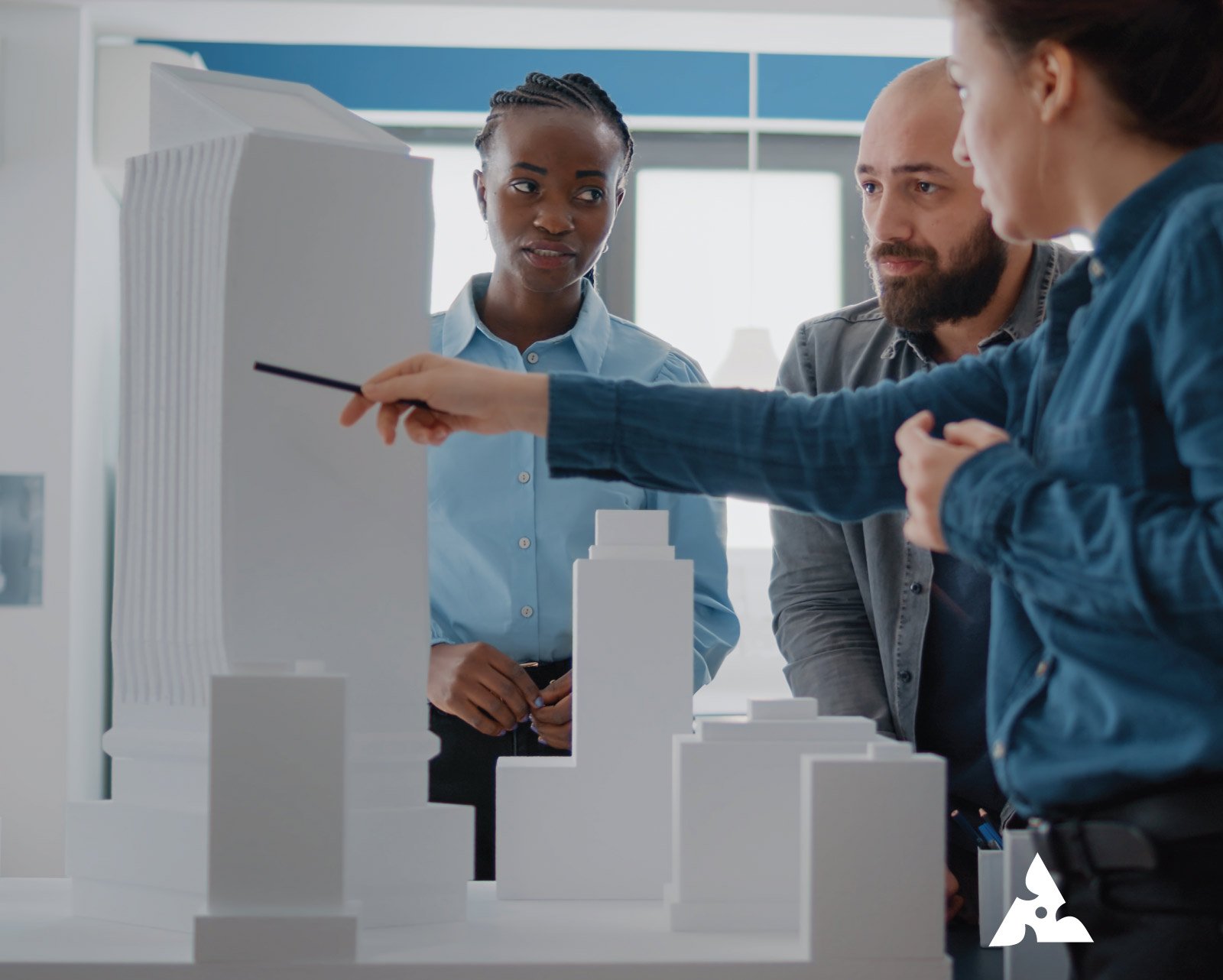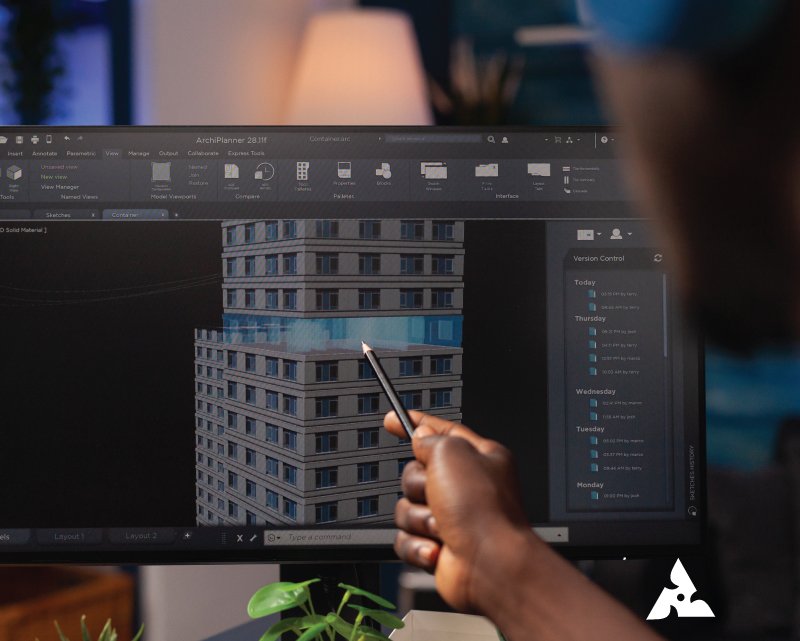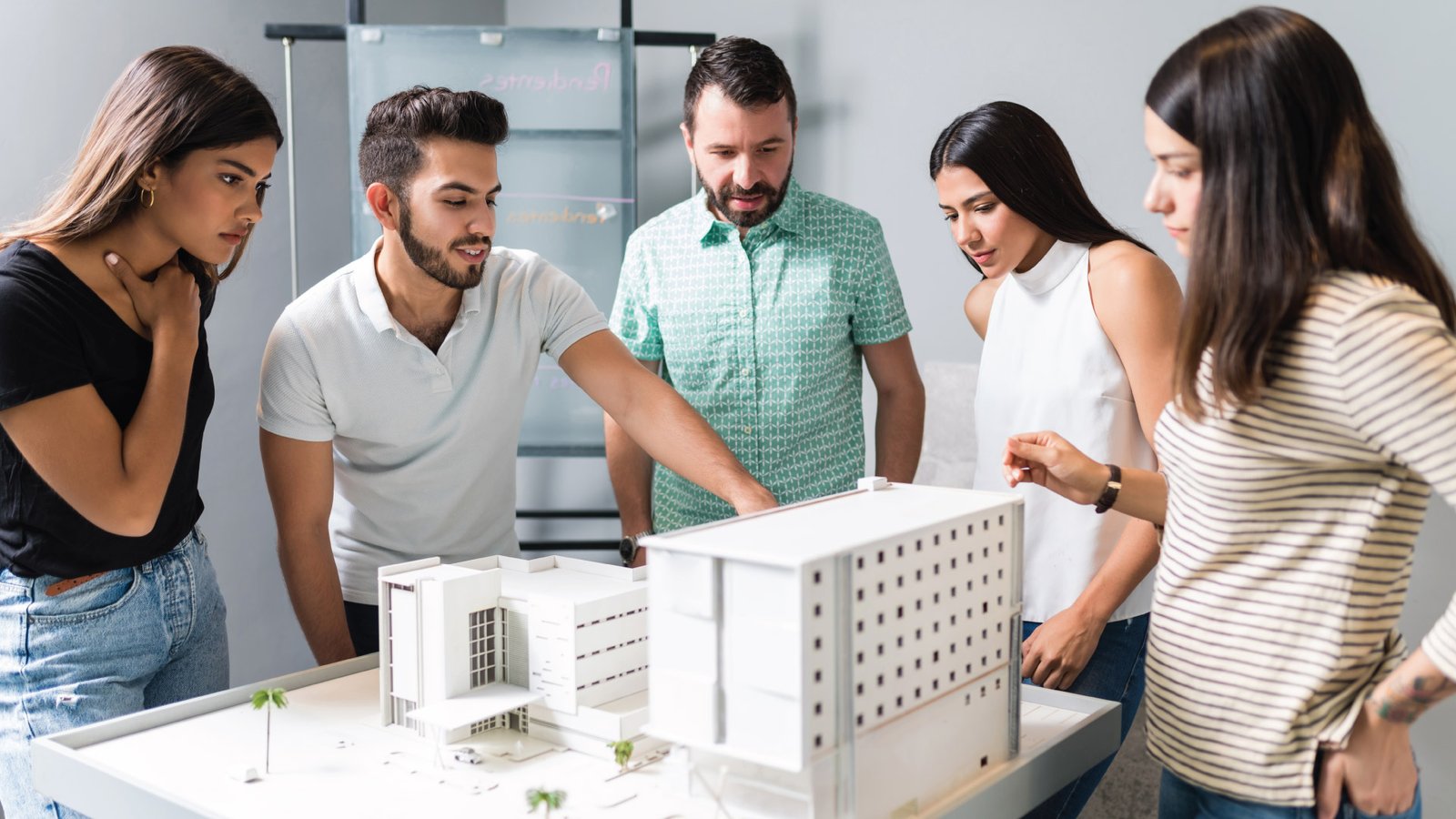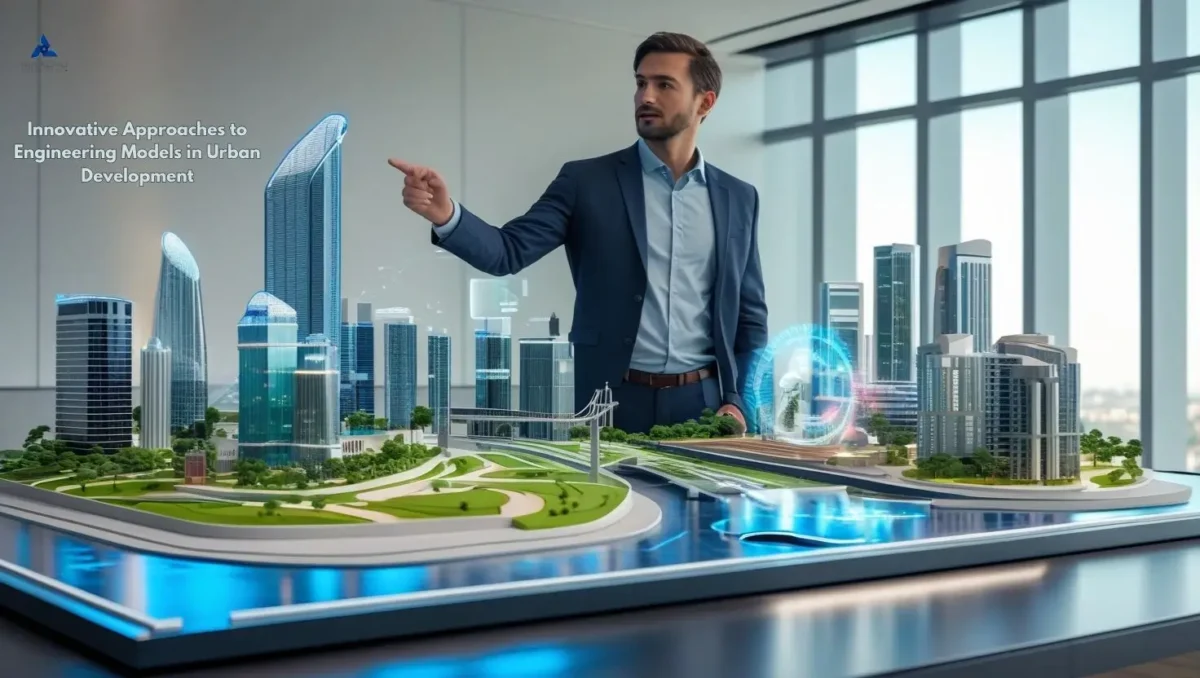Innovative Approaches to Engineering Models in Urban Development
Table of Contents
Urban land development is changing faster than previously, due to rapid population growth and changes in technology, alongside living in a more sustainable way in our cities. Engineering modeling plays a leading role in the change from concept, design to delivery. Building information modeling (BIM) and digital twins in construction are one example of changing the way our cities are determined, designed, and constructed. The aspects of modeling can also be designed in aspects of urban change and require management, control, and urban planning.
In this blog, we unpack the future of engineering models in urban environments, the sustainable benefits engineering models bring to built environment work, and how leading companies such as Maadhu Creatives provide guidance and direction in producing quality engineering models for projects around the world.
What Are Engineering Models and Why Are They Important?
Engineering models can be physical or digital representations of infrastructure projects that provide the ability for engineers, architects, and project stakeholders to visualize and analyze designs before building. Engineering models can be 3D physical scale model representations or highly detailed digital simulations that integrate structural information, environmental impacts, and urban dynamics.
In urban planning and development, engineering models offer clarity, precision, and creativity in three ways:
- Improved collaboration, facilitating visualization of complicated designs.
- Reducing errors and detecting flaws early in the design phase to save time and costs.
- Enhancing efficiency to speed up decision-making and project execution.
- Supporting sustainability by simulating environmental impacts for eco-friendly planning.
The Role of Engineering Models in Modern Urban Development
Cities are becoming more intelligent and more complex. Traditional blueprints and static designs are being replaced by interactive models driven by real-time data representing living city conditions. This is where engineering modeling becomes even more part of the smart city planning process today by:
- Offering immersive visualizations for stakeholders and investors.
- Supporting government agencies in regulatory approvals and urban zoning.
- Optimized transport networks, utilities, and public spaces.
- Setting the stage for sustainable, adaptable infrastructure now and for the future.
These advantages indicate that engineering models are far more than simply a design tool for urban development they are, in fact, a wise investment for large-scale projects.
Innovative Modeling Techniques Driving Smart City Growth
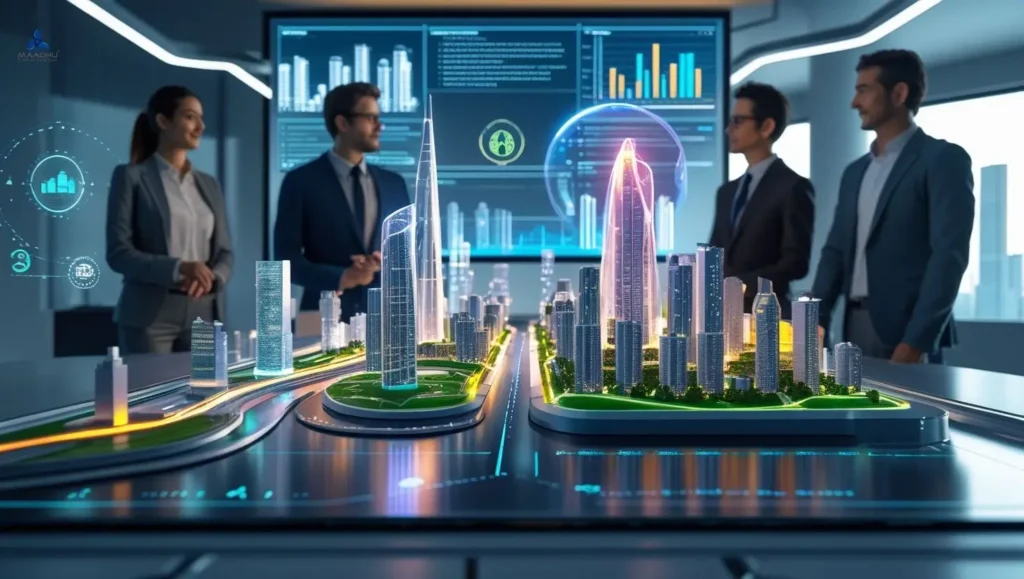
Building Information Modeling (BIM)
BIM is the leading feature relating to the design and construction of infrastructure. It enables a wide range of professionals to collaborate on a shared, data-rich, 3D platform, which is rich in information throughout all stages of a project from planning through to maintenance. Cities that implement BIM experience lower project costs, optimize energy use, and have reliable construction outcomes.
Digital Twins in Construction
A digital twin is a digital copy of an associated real-world asset; thus, it can be updated in real time via IoT sensors and AI analytics. Once a digital twin has been created and adopted, engineers and contractors are able to view the performance of each asset, plan out maintenance, predict potential problems, and, in general, advocate for long-term management of urban infrastructure, making the digital twin an essential asset.
3D Printing and Physical Scale Models
Although designers continue to use cutting-edge digital tools, urban models and physical scale models serve purposes such as presentations, conferences, exhibitions, and assessing the finer details of design. Leading firms such as Maadhu Creatives utilize the latest 3D printing techniques to accurately create in miniature the cityscapes, bridges, high-rise buildings, modes of transport, and infrastructures described in your plan.
Predictive modalities and simulation
Urban planners can use predictive simulations and assessments to explore and predict traffic flow and movement, demographic densities, energy demands, and disaster risk and recovery, where the designs can be optimally designed for intended use (present and in the future).
Benefits of Engineering Models for City Planning
The benefits of engineering models for city planning are transformative:
- Enhanced accuracy to remove speculation with visual planning and data-centric planning.
- Improved public engagement by showing residents proposed infrastructure via scaled, detailed 3D models, creating trust.
- Cost efficiency is achieved by detecting and solving problems early to avoid costly delays.
- Sustainability integration helps create eco-friendly and efficient projects.
- Future-ready infrastructure guarantees that developments will be scalable and adjustable to accommodate future urban demands.
Sustainable Urban Development Through Advanced Engineering Models
Sustainability is an important aspect of urban planning, and engineering models make it a possibility. By incorporating systems of green architecture and smart energy, cities can:
- Reduce emissions with optimized transport networks.
- Utilize renewable energy in buildings and utilities.
- Design water recycling and waste management systems efficiently.
- Plan eco-friendly neighborhoods that promote livability and environmental balance.
Cities like Singapore, Dubai, and Amsterdam are already using smart modeling solutions to achieve sustainable urban growth.
Challenges in Adopting Advanced Engineering Modeling
Although engineering modeling can provide value, some obstacles include:
- The cost of the BIM platform, IoT sensors, and simulation software the models are based upon, which can be prohibitive for many.
- The amount of training required to prepare engineers and architects to utilize the advanced technology.
- The risk to security that comes with managing sensitive infrastructure data.
- Resistance to evolving processes in work cultures and industries that are slower to evolve into digital-first.
Many of these challenges can be addressed with a digital transformation initiative and working with a company that specializes in collaboration or building modeling like Maadhu Creatives.
Case Studies: Maadhu Creatives and Global Engineering Models
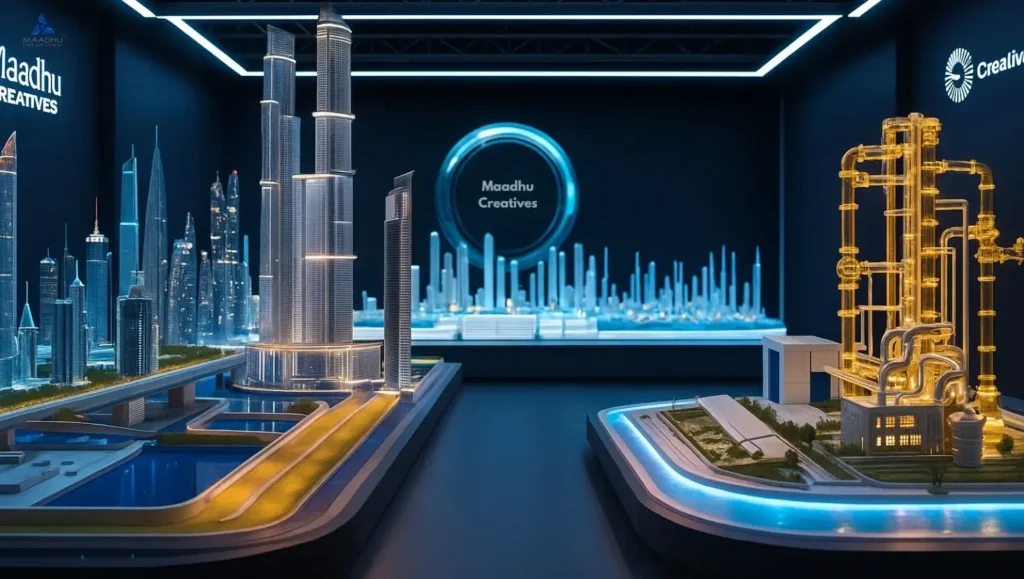
Maadhu Creatives, a leading architectural and engineering modeling company, has positioned itself both nationally and globally with world-class physical and digital engineering modeling capabilities. Every project that they take on is a testimony to the effective use of modeling in driving smart infrastructure design.
- Urban Mega Projects: Maadhu Creatives has created incredibly detailed city-scale models for global urban planners, richly illustrating transport systems, bridges, and mostly, skyscrapers, to a high level of detail.
- Industrial and Engineering Models: They have engineered models for large industries, including oil refineries and power plants, that are used for stakeholder presentations and approvals from government entities.
- Smart City Exhibitions: Maadhu Creatives has done projects in which it integrated lighting, motion, and automation into models, to help planners visualize smart city concepts in an engaging, shareable, interactive way.
- Educational and Research Applications: There are many universities and R&D institutes that have widely used their incredibly detailed scale models to demonstrate an infrastructure or design concept.
Through its focus on innovation, craftsmanship, and custom technology integration, Maadhu Creatives has become a trusted partner for some of the world’s largest urban planning projects.
Future of Urban Planning with Engineering Modeling
The future of urban planning cannot be discussed without the association of new modeling technologies. Innovations include:
- Artificial intelligence that automates design and reduces the burden of manual effort.
- Augmented and virtual reality experiences that allow stakeholders to virtually tour a proposed development.
- Blockchain technology will allow a secure and transparent sharing of project data.
- Fully automated digital twins that provide real-time monitoring and predictive maintenance.
These trends will ensure that future cities are smarter, safer, and more sustainable, with engineering models at the heart of their development strategy.
Conclusion: Shaping the Future of Urban Landscapes
The rise of engineering modeling marks a turning point in urban development. With tools like BIM, digital twins, and 3D scale models, city planners can design sustainable, efficient, and visually stunning infrastructure. Companies like Maadhu Creatives are setting new standards in this field, creating highly detailed engineering models that help governments, corporations, and developers bring their visions to life.
As cities continue to evolve, engineering modeling will remain essential to building smarter, safer, and more connected communities. By embracing innovation and precision modeling, we can shape cities that meet the needs of today and the challenges of tomorrow.
FAQs
Engineering models help visualize, analyze, and optimize urban infrastructure projects before construction, ensuring accuracy, efficiency, and cost savings.
Building Information Modeling (BIM) streamlines collaboration, minimizes errors, and improves construction timelines by providing a centralized, data-rich design platform.
Digital twins replicate physical assets in real time, enabling engineers to predict maintenance needs and enhance long-term infrastructure performance.
Maadhu Creatives is globally recognized for delivering precision-engineered scale models, digital twins, and smart city exhibits for leading infrastructure projects worldwide.

